Armenia sits between Europe and Asia in the South Caucasus and is drawing more travelers who want real cultural experiences and striking nature. Often called a hidden gem, it mixes ancient history, bold scenery, and friendly people, making it a rewarding place to visit.
From Yerevan’s pink tuff-stone buildings to green canyons, blue lakes, and grand monasteries, Armenia is full of color and tradition. Whether you’re interested in its early Christian story, growing wine scene, or wild mountain paths, this guide will help you make the most of your trip.

Why visit Armenia?
Armenia isn’t just a pin on a map; it’s a place that feels special from the start. The smallest of the three Trans-Caucasus countries has a strong pull for travelers who want something real and less crowded. Every place tells a story, and every meeting feels memorable.
Cultural and historical highlights
Armenia has a rich culture rooted in its place as the world’s first Christian nation. Stone monasteries dot the landscape, many more than 800 years old, showing its lasting faith and skilled building craft. Don’t miss the 4th-century Etchmiadzin Cathedral, often said to be the oldest cathedral on Earth, and the UNESCO-listed Haghpat and Sanahin monasteries, which still inspire visitors today.

History lives in the cities too. Yerevan’s Erebuni Fortress predates Rome by 30 years and shows the deep roots of the capital. The Armenian Genocide Memorial & Museum (Tsitsernakaberd) tells a difficult but important story. In Gyumri, the country’s second city, stroll past dark tuff-stone buildings and visit house museums that keep old traditions alive.
Unique landscapes and natural beauty
Armenia’s scenery is bold and varied. This mountain country has sharp peaks, deep valleys, and thick forests. See the green slopes of Debed Canyon and the bright blue of Lake Sevan, the “Armenian Sea.”
Dilijan National Park, nicknamed “Little Switzerland,” is a favorite for hikers, with forested hills, meadows, and rich plant life. It’s a great base for walks to old monasteries, calm lakes, and summits. For big views, Mount Ararat (in Turkey) is visible from many places in Armenia-especially at Khor Virap-creating iconic scenes you won’t forget.

Armenian hospitality and local experiences
Many visitors praise the warmth of Armenian people. Locals often go out of their way to help and make guests feel at home. Their pride in their country is contagious-you may feel like part of the family by the end.
Homestays and B&Bs offer real insight into daily life. Try making gata (a sweet cake), watch lavash being baked at Yerevan’s GUM Market, and bargain for carpets at Vernissage. Farm-fresh food, real village life, and friendly faces make Armenia stand out.
Best time to travel to Armenia
Choosing when to go depends on what you want to do. Armenia has four clear seasons, each with its own pros and cons.
Weather and seasons
Spring (May-June) and fall (September-October) are often the best months. Days are mild, with Yerevan temperatures from about 10°C (50°F) to 30°C (86°F) in May/June-good for hiking and city walks. Spring brings wildflowers; fall has smaller crowds and comfortable days.
Summer (July-August) can be very hot. Yerevan often sits around 30°C (86°F), sometimes up to 35°C (95°F), but evenings can be cooler with a mountain breeze. Lake Sevan is popular for swimming. Winter (November-March) is cold, with snow in the north. Some tourist places close, but ski lovers head to Tsaghkadzor. In Yerevan, enjoy indoor spots like wine bars and jazz clubs.
Popular festivals and events
Armenia hosts many fun festivals. In summer, Vardavar is a city-wide water fight-expect to get wet. Other lively events include the Mulberry Festival, Areni Wine Festival, and Gata Festival, each tied to local food and crafts.
These gatherings bring music, dance, and great food. Timing your trip to match a festival adds extra color to your visit.
When to avoid crowds
Armenia sees fewer tourists than many countries, so sites are rarely crowded, even in summer. For an even quieter trip, visit in May-June or September-October. Winter is also much less busy, especially outside Yerevan and the ski areas.
Prices and crowds don’t spike as sharply as in more famous destinations. Overall, Armenia stays calm and easy to visit most of the year.
Visa requirements and entry rules
Entry is simple for many nationalities, which makes Armenia easy to visit.
Visa-free and e-visa options
Citizens of many countries can enter visa-free for 90 to 180 days. Others can apply online for an e-visa before traveling, which makes arrival smoother.
Check the latest rules for your passport on the Armenian Ministry of Foreign Affairs website before your trip, since policies can change. A quick check helps you arrive with confidence.
How to get to and around Armenia
Getting to Armenia and moving around is straightforward, with options to suit different budgets and styles.
International flights and border crossings
Most visitors fly into Yerevan’s Zvartnots Airport, which has growing links to Europe and the Middle East. If you’re short on time, fly straight to Yerevan. Overland routes from Georgia and Iran are open, and many travelers combine Armenia with Georgia, including stops at UNESCO sites like Sanahin and Haghpat.
Direct land or air travel between Armenia and Azerbaijan isn’t possible due to political tensions; connect via a third country like Georgia. Flights with Türkiye exist, but the land border is only open to non-Armenian and non-Turkish passport holders. Check visas carefully if you plan to enter from Iran.
Public transport: marshrutkas, trains, taxis
Public transport gives a feel for local life. Minibuses (marshrutkas) link most cities and big towns at low cost, but schedules can be unclear and remote spots can be hard to reach.
There are daily trains from Yerevan to places like Gyumri, though they’re often slow and basic. An express train offers more comfort but runs less often and costs more. In Yerevan, new buses and a single-line metro help, and the center is very walkable. GG and Yandex ride-hailing apps are cheap and common (no Uber).
Car rental and self-driving
Renting a car gives the most freedom. Armenia is a bit smaller than Belgium, so you can cover a lot in a week or two. With your own car, you can stop often, reach remote monasteries, and enjoy scenic detours.
Rent from Zvartnots Airport or agencies in Yerevan, with better rates for longer hires. You need an International Driving Permit (IDP). Avoid the northeast border areas with Azerbaijan due to possible landmines-go only with a trusted local guide if needed. Budget road-trippers will like campgrounds such as Crossway Camping and Camping 3 Gs for great views and unique stays.
How many days to spend in Armenia?
Trip length depends on how much you want to see. Armenia works for short breaks and longer trips alike.
Recommended trip durations
For a quick intro, two full days in Yerevan lets you enjoy key sights and food spots. To see major highlights beyond the capital, plan at least 10 days for a relaxed pace-monasteries, parks, and cultural sites.
If you want to see every corner, including remote trails, two to three weeks gives you time to cover more without rushing. Even in a week you can visit many big sights; two weeks or more offers a deeper experience.
Sample itineraries for 3, 5, and 10 days
3-Day Itinerary: Yerevan & Nearby Wonders
- Day 1: Yerevan Exploration. Get a feel for the “Pink City.” Start at Republic Square, climb the Cascade (Cafesjian Center for the Arts), browse Vernissage market, and visit Tsitsernakaberd, the Armenian Genocide Memorial & Museum. Enjoy cafes and nightlife.
- Day 2: Ancient History & Spiritual Sites. Day trip to Echmiadzin Cathedral, the religious center of Armenia and possibly the oldest cathedral in the world. Continue to the Greco-Roman Temple of Garni and rock-cut Geghard Monastery.
- Day 3: Mount Ararat Views & Winery. Head to Khor Virap for classic views of Mount Ararat. Then drive to the Areni wine area to see the world’s oldest winery site (Areni-1 Cave) and taste local wine.
5-Day Itinerary: History & Nature
- Days 1-3: Follow the 3-day plan.
- Day 4: Lake Sevan & Dilijan. Visit Lake Sevan, the “Armenian Sea.” See Sevanavank monastery above the water. Continue to Dilijan, “Little Switzerland,” for light hiking in Dilijan National Park.
- Day 5: Northern Monasteries or Gyumri. Choose between the UNESCO monasteries of Haghpat and Sanahin in Debed Canyon or go west to Gyumri to see historic streets and museums.
10-Day Itinerary: Big Armenian Journey
- Days 1-5: Follow the 5-day plan.
- Day 6: Southern Armenia – Tatev & Goris. Drive south to Tatev Monastery via the Wings of Tatev cable car (the world’s longest reversible aerial tramway). Explore, then overnight in Goris, known for rock formations and caves.
- Day 7: Khndzoresk & Cave Villages. From Goris, visit Khndzoresk with its long hanging bridge over a huge gorge, cave homes, and “hoodoo” rocks.
- Day 8: Vayots Dzor Wine Region & Noravank. Explore Vayots Dzor. See Noravank Monastery between tall red cliffs. Continue wine tasting nearby.
- Day 9: Hiking or Relaxation. Choose a tough hike in a national park, visit a spa in Jermuk, or spend a slow day revisiting favorite places and craft shops.
- Day 10: Return to Yerevan & Departure. Go back to Yerevan for souvenirs or one last cafe stop before your flight from Zvartnots.

Top places to visit in Armenia
Armenia has cities, lakes, and monasteries to suit many interests. Each area has its own style and story.
Yerevan: history, culture, and nightlife
Yerevan, the “Pink City,” gets its color from rose tuff stone and mixes age-old roots with a modern vibe. It has wide boulevards, lively squares, and a strong cafe scene. Pablo Neruda called it “harmonic like a rose.”
See the massive Cascade with the Cafesjian Center for the Arts and city views, and visit Republic Square with its dancing fountains. Shop for souvenirs at Vernissage and learn about history at Tsitsernakaberd. At night, enjoy galleries, shows at the National Opera and Ballet Theatre, and a wide choice of restaurants and bars.
Lake Sevan: recreation and monasteries
High in the mountains at 1,900 meters, Lake Sevan is a bright blue lake that covers 5% of the country. Summer brings beach time and swimming.
The shore has historic sites, especially Sevanavank monastery on a peninsula above the water. Hayravank nearby sits close to a huge field of khachkars (cross-stones). For a unique stay, try the Soviet-era Sevan Writers’ House. Wild camping is allowed around the lake for those who like sleeping under the stars.
Dilijan and Tavush: national parks and hiking
Dilijan and the Tavush region are perfect for nature lovers. Dilijan National Park has forested hills, meadows, and many plant species, with trails to old monasteries, springs, and pretty lakes like Parz.
For longer hikes, the Armenian part of the Transcaucasian Trail runs through this area. Come for fresh air, quiet forests, and mountain views.
Southern Armenia: Tatev, Goris, and Khndzoresk
Southern Armenia is known for wild views and old sites. Tatev Monastery (9th-13th centuries) perches on the edge of a deep gorge. Reach it by the Wings of Tatev tramway, soaring 320 meters above the Vorotan River.
Goris nearby is a small city with unusual rock shapes and a good base for the south. From there, go to Khndzoresk to cross the swinging bridge into a landscape of caves, ruins, and walnut trees among tall rock spires.
Gyumri: Armenia’s historic second city
Gyumri offers a different city feel. Nearly 3,000 years old, it features grand buildings made from dark tuff stone, giving a striking look. Wander the Kumayri Historic District, with sites like the Sev Ghul fortress and the Paris Hotel.
Visit the Dzitoghsyan Museum of Social Life and the Aslamazyan Sisters House-Museum. Gyumri moves at a slower pace and gives a closer look at Armenian city life and art.
Vayots Dzor: Noravank and wine region
Vayots Dzor is great for history fans and wine lovers. The highlight is Noravank Monastery, a 13th-century complex set in a valley of red cliffs. Stories say God saved it during the Mongol period. The carvings and reliefs shine at sunset.
This is also a growing wine region with the world’s oldest winery found in Areni-1 Cave. Try wines made from the native areni grape. Vineyards like Momik Wine Cube make for a fun tasting stop.
Religious sites: Khor Virap, Geghard, Echmiadzin
As the first Christian nation, Armenia has many important religious places. Khor Virap on the Ararat Plain offers the best view of Mount Ararat. Saint Gregory the Illuminator was once held here before converting King Tiridates III in 301 AD.
Geghard Monastery (UNESCO) is partly carved into rock in the Azat River Gorge. It takes its name from the spear said to have pierced Christ’s side. The 13th-century Avazan Chapel has a sacred spring. Echmiadzin Cathedral near Yerevan is the center of the Armenian Apostolic Church and is often called the oldest cathedral in the world.
Best things to do in Armenia
From outdoor fun to cultural learning, Armenia offers plenty to fill your days.
Hiking and trekking adventures
Armenia is a great place to hike. Mountains, canyons, and forests create trails for all levels. Dilijan National Park has forest paths and hidden monasteries. For a bigger challenge, climb Mt. Aragats, the country’s highest peak.
Long-distance hikers can follow parts of the Transcaucasian Trail. The HIKEArmenia app helps with finding routes and remote sights. Lake Sevan and the Khosrov Reserve also offer strong hiking options.
Wine tasting and culinary experiences
Armenia, alongside Georgia, helped start winemaking thousands of years ago. The Areni-1 Cave is the site of the world’s oldest known winery. With hundreds of native grapes, a wine tour-especially in Vayots Dzor-is a must. Try wines made from areni.
Food lovers will be happy here. Armenian meals feature fresh produce and many regional dishes. Watch lavash (thin flatbread) being baked at GUM Market, and try village meals made from local ingredients. Don’t miss dolma, harissa, khorovats (BBQ), and Armenian coffee.
Historical tours and museums
Exploring Armenia’s long history is a key part of any visit. There are countless monasteries and churches, each with a story. Plan trips to Khor Virap, Geghard, Noravank, and Tatev. Sanahin and Haghpat in Debed Canyon are also major highlights.
In Yerevan, visit the Erebuni Historical & Archaeological Museum-Reserve and the Erebuni Fortress. The Armenian Genocide Memorial & Museum (Tsitsernakaberd) is moving and informative. In Gyumri, house museums and the Aslamazyan Museum share everyday life and art. Echmiadzin Cathedral also has a museum with religious relics.
Wellness and spa resorts
For rest and healing, head to Jermuk, the most famous spa town, with over 40 hot springs. You’ll find hotels and spas offering treatments, plus the Gallery of Water where you can taste mineral waters at different temperatures.
These calm spots are good places to slow down after active days, often set among forests and mountains.
Local crafts and shopping
Take home a piece of Armenia with traditional crafts. In Yerevan, Vernissage is full of carpets, antiques, and handmade items like jewelry, ceramics, woodwork, and art.
Armenian carpets are known for bright colors and detailed designs. You’ll also find great food gifts: dried fruits (especially apricots), cheeses, wine, and brandy.
Typical Armenian food and drinks
Armenian food shows centuries of cooking traditions. Fresh local ingredients are at the center of each meal.
Must-try dishes and local specialties
Armenian food blends Middle Eastern and Mediterranean flavors with its own style. Try these:
- Lavash: Thin, large flatbread served with most meals and used for wraps.
- Dolma: Grape leaves (or cabbage, peppers, tomatoes) stuffed with minced meat, rice, and herbs.
- Harissa: Slow-cooked wheat and meat porridge (usually chicken or lamb).
- Khorovats (BBQ): Skewers of marinated meat grilled over open flames.
- Gata: Sweet bread or cake with a buttery filling (koritz), with regional variations.
- Lahmajun: Thin, crisp flatbread topped with spiced minced meat and vegetables.
- Khachapuri: Cheese-filled bread also common in Georgia, with tasty Armenian versions.
- Armenian String Cheese: Salty, stringy white cheese, often sheep’s milk.
- Dzhash: A hearty soup with vegetables, spices, and meat or legumes.
- Dried Fish: Trout from Lake Sevan is popular and tasty.

Best places to eat in Yerevan and other cities
Yerevan has a lively food scene with traditional spots and modern kitchens. From coffee and pastries to fine dining, you’ll find what you want. Cafes are great for snacks and people-watching.
Outside the capital, every region shares its own dishes. Homestays and guesthouses often serve home-cooked meals, which is a great way to try local flavors. Ask locals for tips-they often know the best places.
Armenian wine, brandy, and drinks
Armenian wine is gaining fans worldwide, especially areni-based bottles from Vayots Dzor. A tasting tour there is a good way to learn more.
Armenian brandy, sometimes called “cognac,” is famous and makes a fine gift or after-dinner drink. Other common drinks include tan (a cool yogurt drink), juices made from apricots, pomegranates, and berries, and rich Armenian coffee (soorch). Local beers are easy to find too.
Where to stay in Armenia
Armenia has options for all budgets, from city hotels to quiet countryside stays.
Accommodation types: hotels, guesthouses, hostels
In Yerevan, choose from international chains, boutique hotels, guesthouses, and many hostels. Hostels suit backpackers and offer social common areas and central locations. In smaller towns, family-run guesthouses are popular and give an authentic experience with home-cooked meals and local insight. Larger cities like Gyumri and Dilijan have hotels, and there are resorts near Lake Sevan and in Jermuk.
Budget, mid-range, and luxury options
Armenia is generally affordable compared to Western Europe.
- Budget: Hostel dorms around 7,500 AMD (about US$20). Homestays and B&Bs are cheap and culturally rich. Apartments (including Airbnb) from 20,000 AMD (US$50). Camping is very budget-friendly, with wild camping usually allowed.
- Mid-range: Double rooms from around 30,000 AMD (US$80), often with private bathrooms and breakfast. Examples: Art Guesthouse Yerevan or Mountain Lake Villa B&B near Sevan.
- Luxury: Yerevan has high-end hotels. Upscale stays also appear in Dilijan and along Lake Sevan’s west shore. In Jermuk, simple rooms can start at 15,000 AMD, with pricier spa options available.
Best areas to stay in Yerevan and beyond
In Yerevan, staying near Republic Square or the Cascade area puts you close to the action, with easy access to sights, restaurants, and nightlife. The Kentron (city center) is the most convenient district.
Outside Yerevan, choose a base that matches your plans:
- Dilijan: Good for northern monasteries and hiking, with many guesthouses amid nature.
- Lake Sevan: Choices range from simple guesthouses to larger hotels, especially near Sevanavank.
- Goris: Handy for Tatev, Khndzoresk, and other sights in the south.
- Vayots Dzor: Stay near Areni to be close to wineries and cellars.
- Gyumri: Ideal for history and architecture in Armenia’s second city.
Book ahead during peak season to get your first choice.
How much does it cost to travel in Armenia?
Armenia is usually budget-friendly, but costs depend on your style, lodging, and food choices.
Average daily budget
The currency is the Armenian Dram (AMD). Rough daily costs:
- Budget Traveler (7,250-17,500 AMD / $15-$45 USD per day): Hostels or camping, some self-catering, street food and local cafes, marshrutkas for transport, occasional tour or museum.
- Mid-Range Traveler (14,500-43,000 AMD / $30-$110 USD per day): Private rooms in guesthouses or basic hotels, regular meals at local restaurants, marshrutkas between cities, a few day tours, and entrance fees.
- Upscale Traveler (30,000-77,000 AMD+ / $60-$200+ USD per day): Higher-end hotels, fine dining, private car hires or taxis, and frequent organized tours. Dilijan, parts of Lake Sevan, and top options in Yerevan fit this range.
Specific Cost Examples (approximate, late 2024/early 2025):
- Hostel room: 7,500 AMD (US$20)
- Basic room for two: 30,000 AMD (US$80)
- Self-catering apartment (Airbnb): 20,000 AMD (US$50)
- Public transport ticket (Yerevan): 300 AMD (US$1)
- Soorch (Armenian coffee): 500-800 AMD (US$2)
- Lahmajun: 500-1,500 AMD (US$2-3)
- Dinner for two (local restaurant): 7,500 AMD (US$20) and up
- Local beer at a bar: 800 AMD (US$2)
- Admission to Echmiadzin Cathedral museum: 1,500 AMD
- Round-trip cable car to Tatev Monastery: 5,000 AMD
Yerevan is usually the most expensive place. Credit cards work widely there but less so in smaller towns. Money changers and ATMs are easy to find in the capital, often with low fees.
Saving money and travel tips
Save by using local habits and resources:
- Use Public Transport: Marshrutkas are very cheap between cities; Yerevan’s subway and buses are also low-cost.
- Cook Sometimes: If your lodging has a kitchen, buy groceries at markets and cook a few meals.
- Eat Local: Street food and small cafes are tasty and cheaper than Western-style restaurants.
- Hitchhike and Wild Camp: Hitchhiking is common with short waits, and wild camping is legal. Many locals may even invite you in for food.
- Free Activities: Many monasteries are free (donations welcome). Join free walking tours in Yerevan (tip your guide) and enjoy parks and trails.
- Filtered Bottle: Tap water isn’t always safe, so bring a bottle with a filter to save money and cut plastic.
- Couchsurfing: With planning, you can stay for free and learn from your host.
With a few smart choices, you can see a lot of Armenia without overspending.
Travel safety and local customs
Armenia is very safe for most travelers, including solo and solo female visitors. Basic awareness and respect for local ways make trips smoother.
Is Armenia safe for travelers?
Violent crime is rare. Petty theft can happen in crowded places, so keep valuables secure. Some taxi drivers may overcharge-agree on the price first or use apps with set fares.
Be aware of tensions with Azerbaijan. Avoid the border areas and do not try to enter Nagorno-Karabakh (Republic of Artsakh) from Armenia, as Azerbaijan took control of the area in 2023. Stay updated on the news and skip protests or rallies. For emergencies, dial 112.
Recommended health precautions
No special vaccines are required, but keep routine shots up to date. Tap water in Yerevan may be fine, but bottled or filtered water is safer, especially outside the capital. Bring needed medicines, since your brand may not be available. A small first-aid kit also helps, especially for hikers.
Respectful dress and social etiquette
Clothing in Yerevan is similar to Europe. Outside the capital and at religious places, people tend to dress more conservatively. Women may cover their heads when entering churches (scarves often provided) and wear long skirts or pants. Men should also dress respectfully and avoid shorts or sleeveless tops inside churches.
Armenians are welcoming. Accepting offers of food or drink is polite. Learn a few basic Armenian phrases-people appreciate the effort. Public affection is more low-key than in many Western countries. When in doubt, choose modesty and respect.
Language and communication in Armenia
Handling communication can be part of the fun. Armenia blends languages from its past and present.
How widely is English spoken?
Armenian and Russian are the main languages. English is growing, especially with younger people and in Yerevan. In the capital’s tourist areas, hotels, and restaurants, English works fine. In rural areas, you’ll hear less English.
People often try hard to communicate, using gestures if needed. Don’t be surprised if someone goes out of their way to help.
Essential Armenian phrases for travelers
Learning a few words helps and brings smiles. Try these:
- Barev dzez: Hello (formal)
- Barev: Hello (informal)
- Shnorhakalutyun: Thank you
- Khndrem: Please / You’re welcome
- Ayo: Yes
- Voch: No
- Nerogham: Excuse me / Sorry
- Inchpes ek?: How are you?
- Lav em: I’m fine
- Inchqan e?: How much is it?
- Tstesutyun: Goodbye
Tips for communicating in rural areas
In villages and small towns, try these:
- Learn Basics: Use the phrases above.
- Translation Apps: Use a tool that supports Armenian (or Russian for older generations). Google Translate helps.
- Write It Down: Showing a written word can work better than pronouncing it.
- Use Gestures: Pointing and miming often work well.
- Try Russian: Even a little Russian can help with older locals.
- Local Guides: Hire a guide for remote areas and cultural context.
- Stay Patient: A calm, polite approach goes a long way.
Connectivity and practical travel tips
Staying online and planning smart helps your trip run smoothly. Here’s how to prepare.
SIM cards, internet, and connectivity
Getting a local SIM is easy and cheap. Ucom, Vivacell, and Beeline offer low-cost data plans for maps, calls, and messages. Most hotels and guesthouses have Wi-Fi, especially in Yerevan.
Wi-Fi can be weak in remote areas. If travel to Nagorno-Karabakh (Artsakh) becomes relevant, note that Vivacell SIMs may work there, Wi-Fi can be unreliable, and Karabakh Telecom sells local SIMs in Stepanakert.
Packing advice for Armenia’s climate
Pack for the season and terrain:
- Spring/Autumn (May-June, Sept-Oct): Layers help. Bring light-to-medium clothing, a waterproof/windproof jacket, and comfy walking shoes.
- Summer (July-August): Choose light, breathable clothes, plus a hat, sunglasses, and high-SPF sunscreen. Nights can cool down in the mountains, so bring a light jacket. Pack swimwear for Lake Sevan.
- Winter (Nov-March): Bring thermal layers, a heavy coat, gloves, a hat, and waterproof boots, especially for snowy areas and ski trips.
- General Essentials: A filtered water bottle, daypack, universal adapter, and personal meds. For hikers: sturdy boots, poles, and rain gear.
Useful apps and booking resources
These tools can make planning easier:
- Ride-hailing: GG and Yandex for taxis in Yerevan.
- HIKEArmenia: Find hiking trails and remote sites.
- Translation: Google Translate for quick help.
- Accommodation: Booking.com and Hostelworld for hotels/hostels; Airbnb for apartments.
- Flights: Skyscanner for deals.
- Trains: Railway.am for tickets; The Man in Seat 61 for rail guidance.
- Buses: Rome2Rio for route ideas.
Travel insurance recommendations
Buy good travel insurance for Armenia. It provides important protection for illness, injury, lost bags, cancellations, or medical emergencies-especially if you plan to hike in remote areas.
SafetyWing has plans for digital nomads and long trips; IATI Insurance is another option. Always read the fine print to make sure your policy covers your activities and any risks.
Frequently asked questions about Armenia travel
Here are answers to common questions to help you plan.
Solo travel in Armenia
Armenia suits solo travelers, including solo women. Crime is low and people are welcoming. It’s easy to meet locals who are happy to chat or help, even if English is limited outside Yerevan.
Use basic common sense: watch your things, avoid poorly lit streets at night, and don’t accept drinks from strangers. Many solo travelers say they feel safe and often get invited to share a meal or coffee.
Can you visit Nagorno-Karabakh (Artsakh)?
As of late 2023, Azerbaijan took control of Nagorno-Karabakh. Travel there from Armenia is not possible and is strongly discouraged due to safety and legal issues. Many governments advise against all travel to the area. Please follow official advice and do not try to enter, as you could face serious consequences, including detention or future entry bans.
Always check your government’s travel advisories for the latest updates on conflict areas.
What souvenirs to buy in Armenia?
Popular gifts that reflect Armenian culture include:
- Armenian Carpets: Detailed patterns and bright colors; find them at Vernissage.
- Handmade Crafts: Ceramics, wood carvings, jewelry with Armenian motifs, and local art.
- Khachkar Replicas: Mini versions of carved cross-stones.
- Apricot Products: Dried apricots, jams, apricot brandy, and teas.
- Armenian Brandy: Famous and smooth, with many ages and blends.
- Wine: Especially bottles made from the areni grape.
- Local Delicacies: Cheeses, sweets like gata, and spice mixes.
- Silver Jewelry: Fine work with local designs and stones.
Buying from markets supports local makers and gives you a real feel for Armenian craft and design.


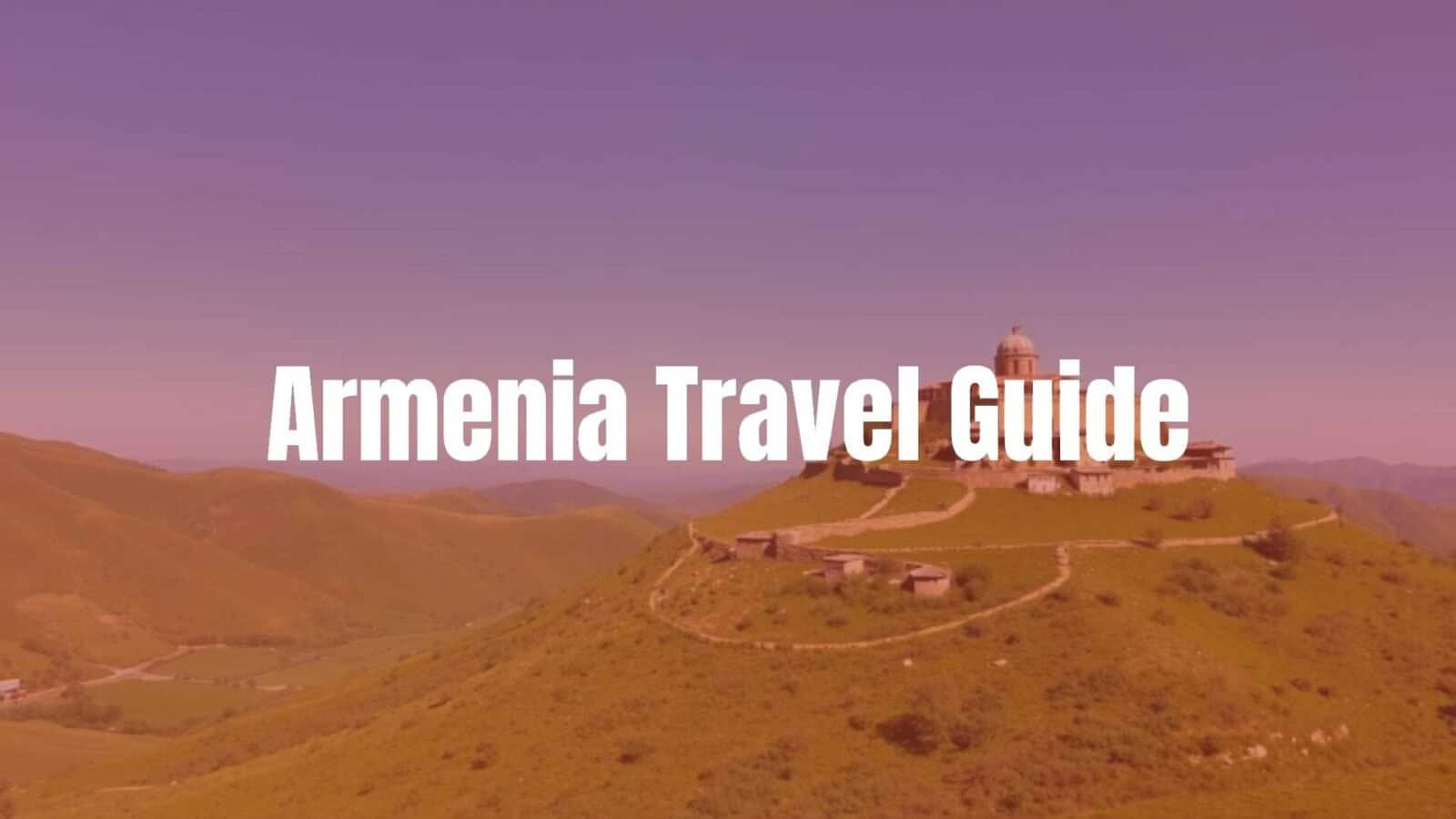



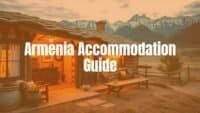
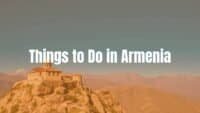

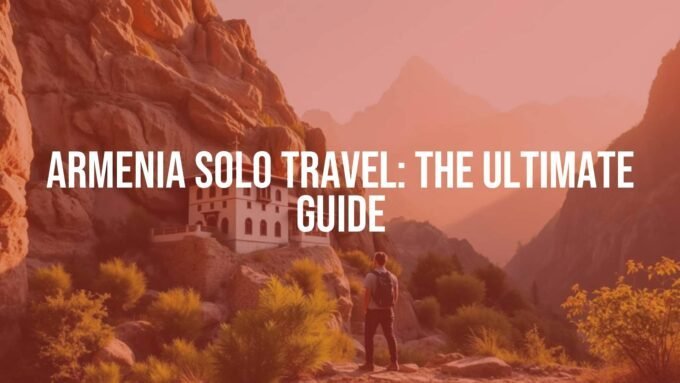
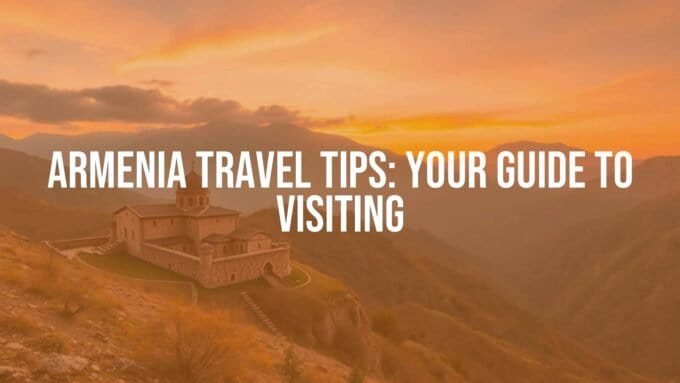





Leave a comment